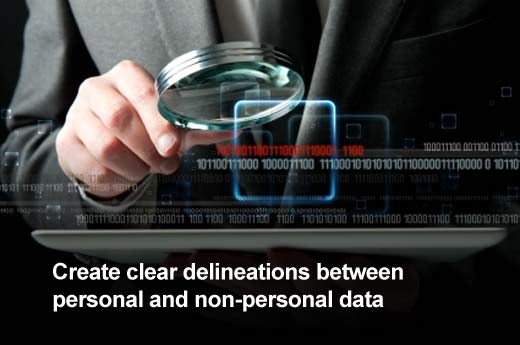Organizations should create a privacy program that keeps personal data at arm’s length, but under control, according to Gartner, Inc. Gartner predicts that by 2019, 90 percent of organizations will have personal data on IT systems that they don’t own or control.
Enterprises have traditionally been the target of security threats, and until recently, those hackers focused on attacking vulnerable IT infrastructure. As protection for such infrastructure improves, the attackers’ attention shifts to softer targets, such as employees, contract workers, customers, citizens and patients.
“As the amount of personal information increases multifold, individuals and their personal data will increasingly become a security target. And, yet in most scenarios the organization is still ultimately accountable for the personal data on its IT systems,” said Carsten Casper, research vice president at Gartner. “The time has come to create an exit strategy for the management of personal data. Strategic planning leaders will want to move away from storing and processing personal data in the next five years.”
“The PCI Data Security Standard (DSS) requires the implementation of stringent controls of those who collect and store credit card data. In response, many companies have decided to eliminate credit card data from their own systems and completely entrust it to an external service provider,” said Mr. Casper. “The same could happen with personal data. If control requirements are too strong and implementation is too costly, it would make sense to hand over personal data to a specialized ‘personal-data processor.'”
Gartner has identified the following steps to prepare for such a strategy.

Click through for five steps that should be considered when preparing to hand over personal data to a specialized “personal-data” processor, as identified by Gartner, Inc.

The first step should be to create a policy that draws a clear line between data that relates to human beings and data that does not. The former category includes contact information and health and financial information, as well as an Internet Protocol address, geolocation data and other traces an individual leaves in the online world. The latter category especially includes business plans, corporate financial data and intellectual property. Separating the two is necessary, because different laws apply.
The true challenge resides in handling data that can fall into both categories. Whether an organization decides for or against declaring certain types of data as “personal data” depends on the organization’s risk appetite. In most cases, companies tend to prefer to risk a little rebuke from a regulator rather than having to re-engineer complete business processes.

Even the best data protection policy is worthless if you can’t live by it. Locating and documenting personal data have to go hand-in-hand with creating the policy. Once personal data has been located, it needs to be protected. Encryption is the most widely used protective control. An additional challenge exists where the organization does not own the underlying IT infrastructure — be it a mobile device or a cloud environment.

Personal data should not be combined with other data, if possible. Any technology that processes personal data in the same way it processes non-personal data creates a risk. Content should be analyzed before decisions are made about protection. Such decisions are easier if employee performance information is stored in an HR management system, customer information is stored in a CRM system, and financial and business information is stored in an ERP system.

Compliance with dozens of privacy laws and cultural expectations from multiple regions can be costly. Privacy standards simplify control frameworks, audits and information exchange, especially in scenarios where many players and stakeholders are involved. Regardless of the specific privacy standard and cross-border transfer mechanism used, the most difficult challenge for organizations is to make such rules binding on all entities involved, including all employees, and accept liability in cases where employees or customers suffer harm.

Privacy expectations are still influenced by laws, and jurisdictions have physical boundaries. This collides with the IT reality of cloud and mobile computing. The physical location is the location where the electrons and bytes are stored. Given that this information can be accessed from the other end of the world in a fraction of a second, the physical location should be increasingly irrelevant. Yet this physical location is still what many regulators insist on, although the legal location should be most relevant from a regulatory perspective.
Companies and service providers prefer to move toward a more pragmatic approach — the logical location. As an example, personal data might be stored in a data center of a U.S. cloud provider, which is operated by a third-party service provider from India. However, data is encrypted, the Indian IT employees manage only routers and servers, and only European employees of the client can actually see the data. These employees are located in Europe, and bound by a European employment contract and European privacy laws. Logically, the data is in Europe, although legally and physically, it may be somewhere else.














